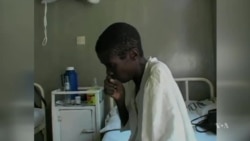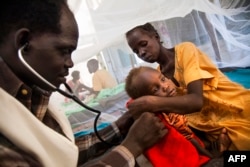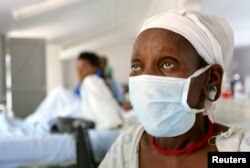Although the overall number of TB deaths continues to fall across the globe, new data showed 50 percent more cases exist in India than previously thought, so the total number of cases worldwide has increased from 9.6 million to 10.4 million. Six countries - India, Indonesia, China, Nigeria, Pakistan and South Africa - account for 60 percent of the total number of people with TB. Dr. Eric Goosby, the United Nations Special Envoy on Tuberculosis, told VOA in a Skype interview that because of better surveillance, the numbers are more accurate. But on the other hand, he said, not all cases of TB are being counted, because many countries have outdated surveillance systems.
Scientific modeling shows that more than four million people with TB are not being treated, but no one knows where they are. This means the disease is spreading undetected. That, Goosby said, is what worries him. "TB is the threat that can be spread by an aerosolized spread: not by behavior that increases your risk, but by standing behind somebody in line who coughs and infects you with a micro-bacterium. No high-risk behavior associated with it other than [being in the] wrong place at the wrong time." Within weeks after exposure to tuberculosis, a person develops a cough, fever, night sweats, then starts to lose weight. TB usually attacks the lungs, but it can attack any organ. It kills 5,000 people a day, more than the number of people who die of malaria and HIV. "And we cannot find it in our country budgets to prioritize TB as a health threat," Goosby said. Like Ebola, tuberculosis thrives in poor communities, where people live in crowded conditions with poor sanitation and poor nutrition.

As the world learned with Ebola, diseases don't stay put. Modern travel took the Ebola virus around the world, and it can do the same with TB. Yet, Goosby said, people have become complacent about this killer disease. "Our political will has waned, and it has been de-prioritized in ministries of health as the urgent, emergent disease to respond to. As a result, we see TB beginning to increase in the number of deaths it’s causing," the U.N. official told VOA. "We are now at a death rate of 1.8 million a year, which puts TB as the number-one infectious disease killer on the planet." "We can diagnose it, we can treat it with effective anti-microbacterial drugs, and cure it in about 90 percent of cases with the current drugs that are available." The need to find and treat people with TB is urgent because the disease is developing a resistance to the the two most potent TB drugs. The WHO views drug-resistant tuberculosis as a public health crisis that needs to be stopped.
Based on WHO estimates, some 480,000 people contracted multi-drug resistant TB in 2015 - more than half of them in India, China and Russia. And most people who have multi-drug resistant TB are not getting proper treatment. As for the millions of cases that are undocumented, Goosby said, "Every country should know what their portion of that 4.3 million is, and on a geo-mapping level, map out where those new infections are, go find them, identify them and retain them in care. It’s got to be that pro-active." As the United Nations' special envoy on TB, Goosby's challenge is to get presidents and their ministers of health and finance to see how perilous the TB epidemic is. If all countries cooperate, TB can be stopped, Goosby says. The goal is to end the disease by 2030. It's a tall order, but Goosby was a player in the global effort to bring HIV under control. He says it can be done.
http://www.voanews.com/a/global-effo...t/3561916.html


 The Science, Health, and Technology Room
The Science, Health, and Technology Room


 Reply With Quote
Reply With Quote











